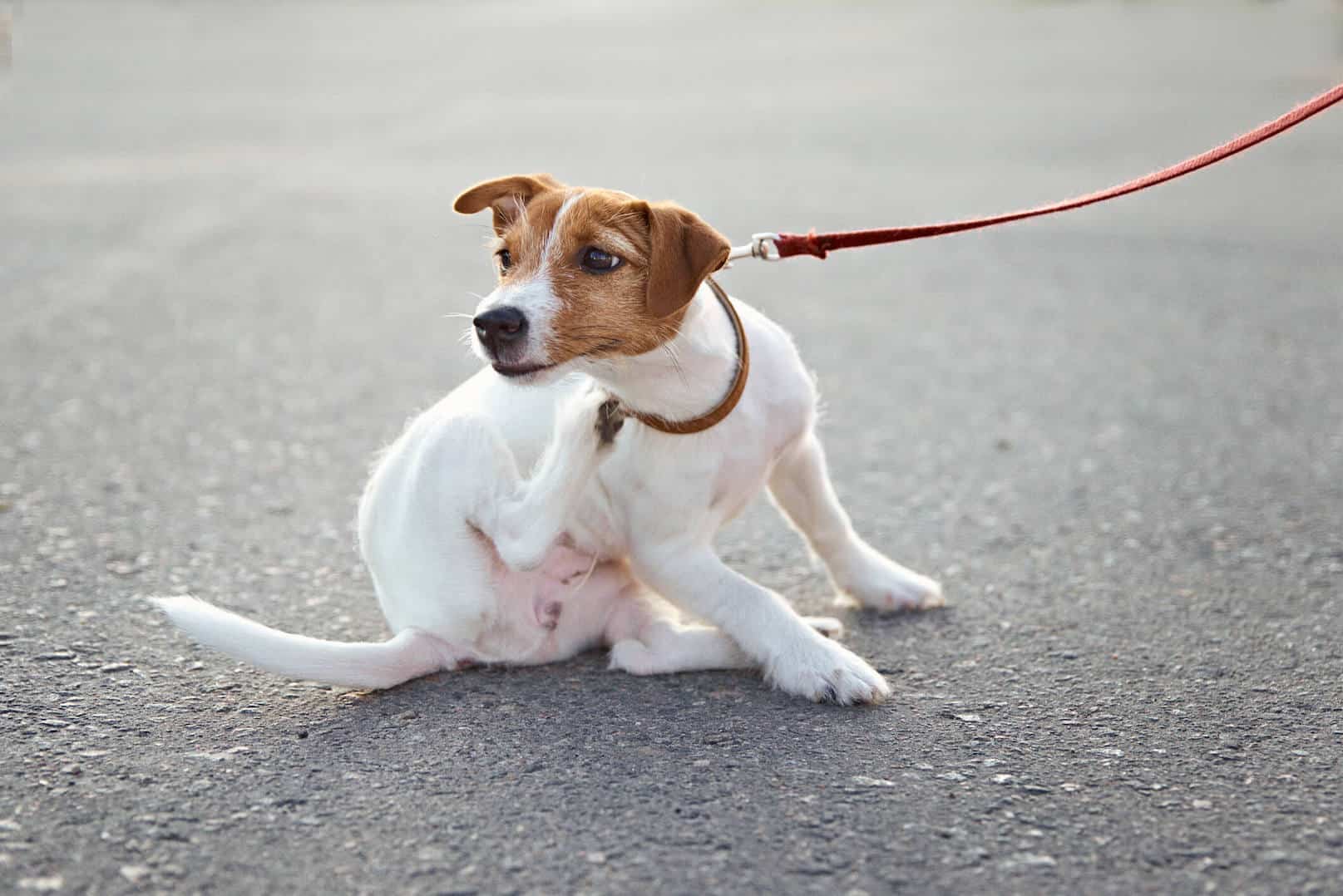There’s nothing quite like the bond between a human and their canine companion. However, when your furry friend starts showing signs of discomfort or irritation, it can be concerning. In this informative blog post, we’ll explore seven common signs that may indicate your dog has a food allergy. By being aware of these symptoms, you can help your pet live a healthier and happier life.
Key Takeaways:
- Scratching and itching: Persistent scratching and itching can be a sign of a food allergy in your dog.
- Ear infections: Recurrent ear infections that do not respond to treatment may indicate a food allergy.
- Vomiting or diarrhea: If your dog experiences frequent vomiting or diarrhea, it could be a reaction to a food allergen.
Common Food Allergens
Proteins: Beef, Chicken, and Lamb
Any of these proteins can trigger an allergic reaction in your dog. Beef, chicken, and lamb are commonly used in commercial dog foods and treats, making them frequent culprits for food allergies. If you suspect your dog is allergic to one of these proteins, it’s imperative to switch to a hypoallergenic dog food that uses a different protein source.
Carbohydrates: Wheat, Corn, and Soy
Wheat, corn, and soy are common allergens for dogs as well. These carbohydrates are often used as fillers in dog food and treats, but they can cause allergic reactions in sensitive dogs. If your dog is allergic to wheat, corn, or soy, you can try switching to a grain-free or limited ingredient dog food to see if their symptoms improve.
With food allergies, it’s crucial to identify and eliminate the specific ingredient causing the reaction. Working with your veterinarian to conduct a food trial or allergy testing can help pinpoint the allergen and create a tailored diet plan for your dog’s unique needs.
Skin Issues
Itching and Scratching
Even though occasional scratching is normal for dogs, excessive itching could indicate a potential food allergy. The constant scratching, licking, and biting of the skin can lead to skin irritation and discomfort for your furry friend.
Redness and Inflammation
Issues such as redness, swelling, or inflammation on your dog’s skin could be a sign of a food allergy. These symptoms may appear in specific areas where your dog is constantly scratching or licking, causing further irritation.
Redness and inflammation are the body’s response to an allergen present in your dog’s food, triggering an immune reaction that manifests on the skin. If left untreated, this can lead to more severe skin issues and discomfort for your pet.
Hair Loss and Skin Lesions
Itching, hair loss, and the development of skin lesions are common signs of a potential food allergy in dogs. These symptoms may occur in conjunction with excessive scratching and licking, leading to further complications if not addressed.
This can be distressing for your dog and may even impact their quality of life if the underlying food allergy is not identified and treated promptly.
Gastrointestinal Problems
Diarrhea and Vomiting
One common sign of a food allergy in dogs is gastrointestinal upset, which can manifest as diarrhea and vomiting. If your dog is experiencing frequent bouts of diarrhea or vomiting after meals, it may be a sign that their body is reacting negatively to something in their food.
Gas and Bloating
With a food allergy, your dog may also experience increased gas and bloating. If you notice that your dog is passing gas more frequently or seems uncomfortably bloated after meals, it could be a sign that their digestive system is struggling to process a particular ingredient in their food.

The buildup of gas in the intestines can be painful and lead to discomfort for your dog, causing them to exhibit signs of distress such as restlessness or pacing. It’s vital to pay attention to these symptoms to help identify and address any potential food allergies your dog may have.
Abdominal Pain and Whining
One of the more subtle signs of a food allergy in dogs is abdominal pain and whining. If your dog is experiencing discomfort in their abdomen, they may exhibit behaviors such as whining, whimpering, or even aggression when their stomach is touched or manipulated.
To help alleviate your dog’s discomfort, it’s crucial to work with your veterinarian to identify and eliminate the allergen from their diet. By addressing the root cause of the food allergy, you can help your furry friend feel better and lead a happier, healthier life.
Ear Infections
Once again, ear infections are a common sign that your dog may have a food allergy. If your dog is constantly scratching at their ears or shaking their head, it could be a result of an allergic reaction to their food.
Frequent Ear Cleaning
Infections can occur when your dog’s ears are not properly cleaned and cared for. Regularly cleaning your dog’s ears can help prevent infections and keep them comfortable.
Yeast Infections and Odor
On occasion, food allergies can lead to yeast infections in your dog’s ears, causing a foul odor. Yeast infections are often accompanied by redness, swelling, and discharge in the ears.
Odor
If you notice a strong, unpleasant odor coming from your dog’s ears, it could be a sign of a yeast infection caused by a food allergy. It’s imperative to address the underlying allergy to prevent further ear issues.
Excessive Scratching and Head Shaking
Scratching
Excessive scratching at the ears and head shaking are common signs of discomfort in dogs with food allergies. If your dog is constantly scratching or shaking their head, it’s imperative to investigate the possibility of a food allergy.
Frequent
Frequent episodes of scratching and head shaking can indicate that your dog is experiencing discomfort due to a food allergy. Consulting with your vet to determine the root cause is crucial for your dog’s health and well-being.
Paw Licking and Chewing
Excessive Licking and Chewing
Licking and chewing on paws excessively can be a sign that your dog is experiencing a food allergy. If you notice your furry friend constantly licking or gnawing at their paws, it could indicate an underlying issue with their diet. Dogs with food allergies often develop skin irritations, and one way they try to alleviate the discomfort is by focusing on their paws.

Paw Redness and Inflammation
Excessive paw redness and inflammation are another indication that your dog may have a food allergy. Red, inflamed paws can be a result of the body’s immune response to certain ingredients in your dog’s food. If you see swelling, heat, or redness on your dog’s paws, it’s crucial to address the potential food allergy to alleviate their discomfort.
It’s crucial to monitor your dog’s paws regularly for any signs of redness, swelling, or irritation. If you notice these symptoms persisting, consulting with your veterinarian to determine the root cause is recommended. They can help you establish a plan to identify and eliminate the allergen causing your dog’s discomfort.
Interdigital Cysts and Infections
Inflammation in the interdigital spaces between your dog’s toes can be a clear sign of a food allergy. Dogs with food allergies are prone to developing interdigital cysts and infections due to the immune system’s response to the allergen. These cysts can be painful and lead to further complications if left untreated.
Redness, swelling, and discharge in the areas between your dog’s toes should not be ignored, as they can indicate a more severe issue related to food allergies. Seeking prompt veterinary care and potentially adjusting your dog’s diet can help address these interdigital concerns.
Behavioral Changes
Now, let’s look at some behavioral changes that may indicate your dog has a food allergy. Dogs can’t tell us when they’re feeling unwell, but they can show us through their actions. Keep an eye out for any unusual behaviors that may signal a potential food allergy.
Anxiety and Restlessness
With anxiety and restlessness, your dog may start pacing, panting heavily, or acting more clingy than usual. These behaviors can be a response to discomfort caused by a food allergy. If you notice these signs, it’s imperative to consult with your veterinarian to determine if a food allergy is the underlying cause.
Hyperactivity and Destructive Behavior
One common sign of a food allergy in dogs is increased hyperactivity and destructive behavior. If your dog is suddenly more energetic than usual and engaging in destructive behaviors like chewing furniture or digging holes in the yard, it could be a result of a food allergy.
Hyperactivity and destructive behavior can be frustrating for pet owners, but it’s imperative to address the root cause of these actions. A proper diet can play a significant role in managing your dog’s behavior and overall well-being.
Whining and Whimpering
Any excessive whining or whimpering could be a sign of discomfort or pain, which may be associated with a food allergy. If your dog is vocalizing more than usual, especially after mealtime, it’s worth considering the possibility of a food allergy.

Behavioral changes like whining and whimpering shouldn’t be ignored, as they can indicate underlying health issues that need to be addressed promptly. Consulting with your vet can help determine if a food allergy is the cause of these behaviors.
By being aware of these behavioral changes, you can better understand if your dog may be suffering from a food allergy. It’s imperative to observe your pet’s behaviors closely and seek veterinary advice to provide the best possible care for your furry friend.
Conclusion
Drawing together the information presented in this article, it is important for pet owners to be aware of the signs that their dog may have a food allergy. Recognizing these symptoms early on can lead to better treatment and management of the allergy, ultimately improving the quality of life for your furry friend. If you suspect that your dog has a food allergy, it is best to consult with a veterinarian to determine the best course of action for your pet.
By staying informed and observant of your dog’s behavior and health, you can provide the best possible care for them. Remember that each dog is unique, and what works for one may not work for another. With proper attention and care, you can help your dog live a happy and healthy life, free from the discomfort of food allergies.
FAQ
Q: What are food allergies in dogs?
A: Food allergies in dogs occur when their immune system reacts to certain ingredients in their food, leading to various symptoms and health issues.
Q: What are the common signs that my dog may have a food allergy?
A: The common signs that your dog may have a food allergy include skin issues like itching and rashes, gastrointestinal problems such as vomiting or diarrhea, chronic ear infections, and respiratory issues like sneezing or coughing.
Q: How can I confirm if my dog has a food allergy?
A: To confirm if your dog has a food allergy, you can consult with your veterinarian who may recommend an elimination diet or allergy testing to identify the specific ingredient causing the allergic reaction.
Q: What ingredients are most likely to cause food allergies in dogs?
A: Common food allergens for dogs include proteins such as beef, chicken, and dairy products, as well as grains like wheat and corn. However, each dog may react differently to specific ingredients.
Q: How can I manage my dog’s food allergies?
A: To manage your dog’s food allergies, you can switch to hypoallergenic dog food that excludes common allergens, carefully read food labels to avoid triggering ingredients, and monitor your dog’s symptoms closely for any changes or improvements.










